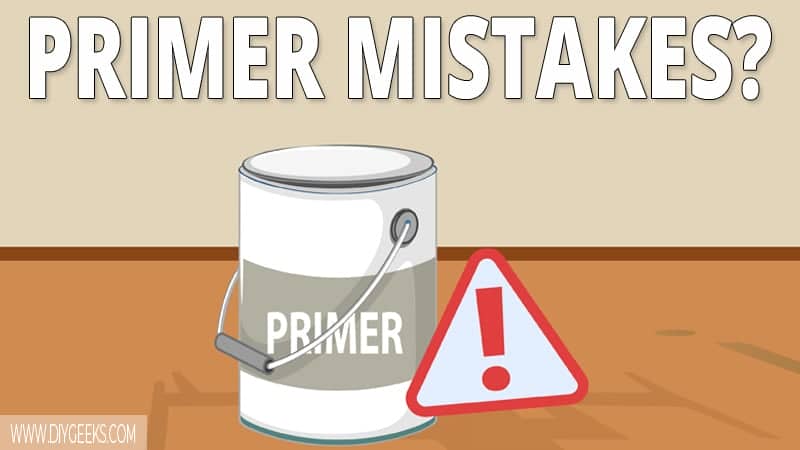Paint primer covers imperfections and provides a smooth base for paint to stick to.
You can encounter many primer problems, such as a cracking finish, bubbles, clumps, or a sticky finish.
We will look at some common mistakes, why they occur, and how to fix them.
1. How To Fix Primer Cracking?
To fix primer cracking, do the following things.
- Use a trowel or scraper to remove the cracked primer coating from the surface.
- Sand the surface to remove filth and primer residue.
- Repair gouges and imperfections on the surface.
- Sand again with fine-grit sandpaper to smoothen the surface.
- Re-apply two coats of paint primer and leave to dry.
A primer coating will crack if you apply thin coats or if the coating dries too fast. Thin coats won’t cover the surface properly, will have poor durability, and will crack from minimal usage. This happens if you over-thin it.
The coating will dry too fast if you expose it to increased heat as its solvent will evaporate faster and the particles won’t have enough time to harden or become compact. This leads to a poor bond between paint particles, and this can cause the coating to crack.
2. How To Fix Bubbles in a Primer Coating?
To fix bubbles in a primer coating, pop the bubbles, sand the surface, and touch-up the finish with another primer coating.
If that doesn’t work, do the following things.
- Pop the bubbles in the coating.
- Remove primer from the surface.
- Sand the surface with a fine-grit sandpaper.
- Apply a coat of sanding sealer on the surface.
- Re-apply two coats of the paint primer and leave it to dry.
A primer finish will develop bubbles if air pockets are trapped inside the surface (or coating) before applying it — this happens if you paint over porous surfaces or if you stir the primer too hard or fast. The bubbles can pop and scar the finish after a while.
Fresh porous surfaces have lots of pores filled with air — once you apply the primer, the air trapped in the pores will cause bubbles. You will trap small air pockets in the primer coating if you stir it too hard or fast.
Note: Use sanding sealer to cover pores on a porous surface and prevent air from getting trapped inside the pores.
3. How to Fix Clumps in Primer?
To fix clumps in primer, thin it. The thinning compound will dissolve the clumps and loosen the primer.
Here’s a guide to fix it.
- Pour the primer paint into a clean paint bucket.
- To thin water-based primer, use water. To thin oil-based primer, use mineral spirits.
- Stir the mixture for a few minutes.
- Test the coating before applying it.
Clumps are solid particles that appear inside the container if you expose paint primer to air. Air will get into the container and cause the particles to clog or clump up, if you don’t seal primer properly while storing it,
Clumps will also appear if the coating is exposed to temperatures below 40 degrees (F). The low temperature will cause the primer coating to solidify.
4. How to Fix a Sticky Primer?
To fix a sticky primer, increase the heat around the coating to accelerate the evaporation rate. To increase the heat around the coating, use a hair dryer or heater. If that doesn’t work, remove the coating, fix or dry the surface, and re-apply it.
A primer coating will get sticky if you re-coat it too soon. If you re-coat while the coating is still wet, you will trap the solvent between coats; this causes the coating to turn sticky. Also, the coating will turn sticky if you apply primer over a wet surface.


